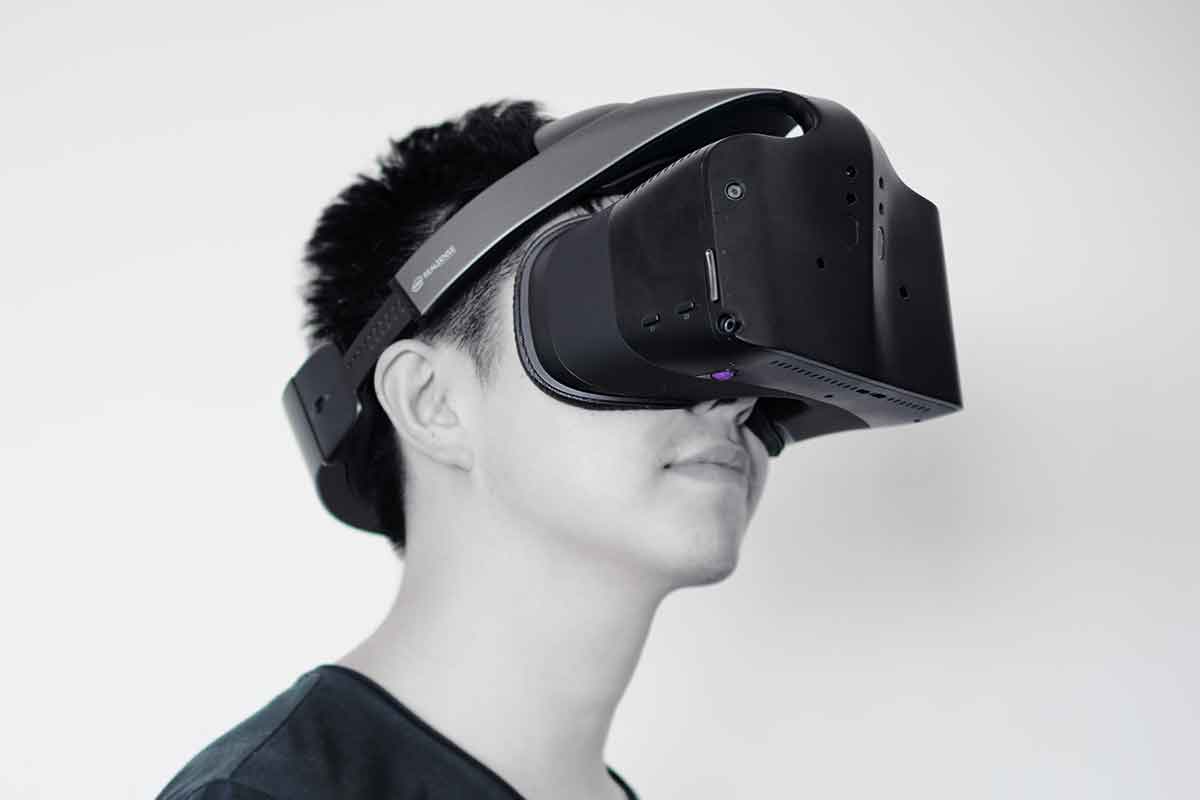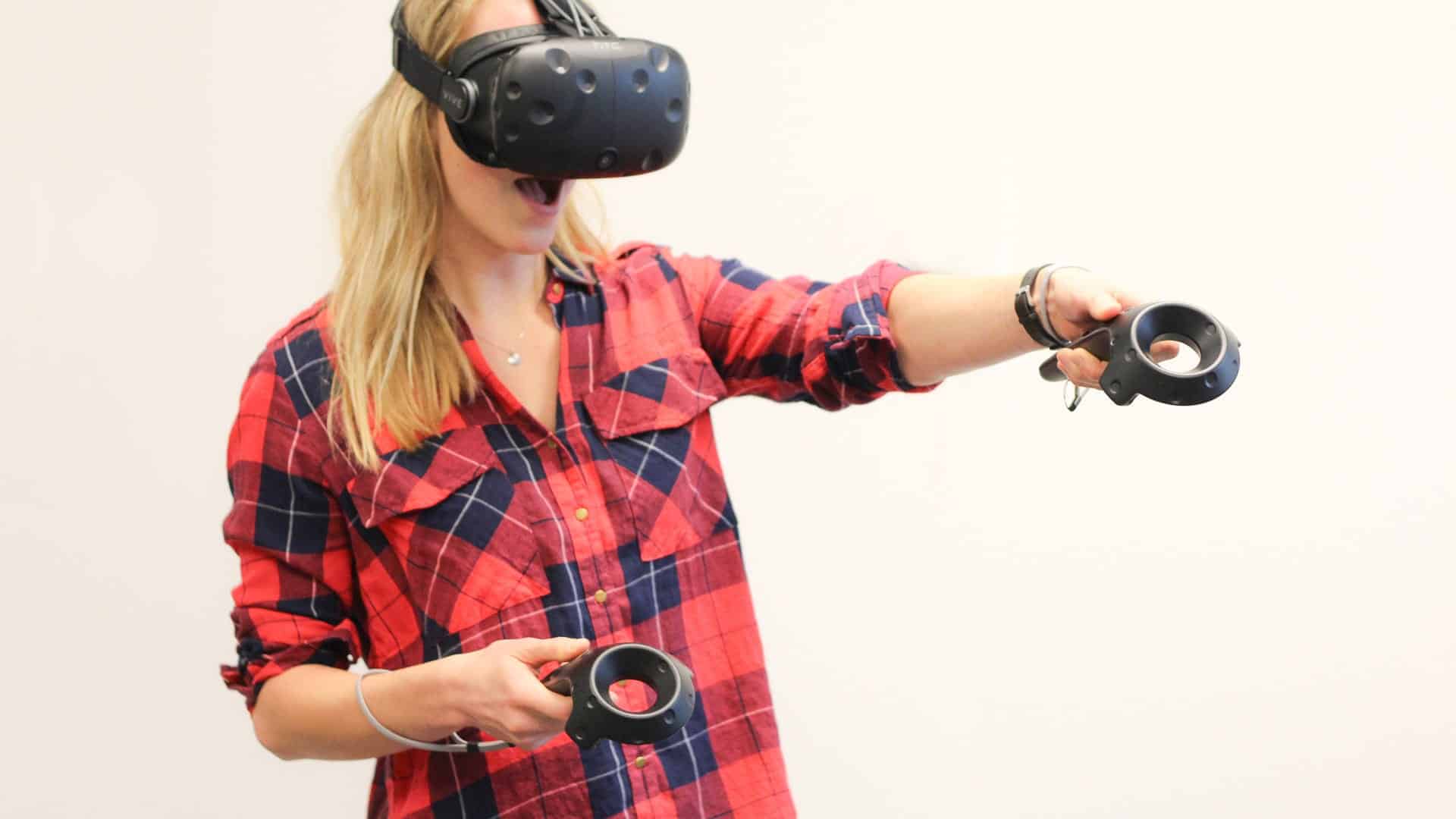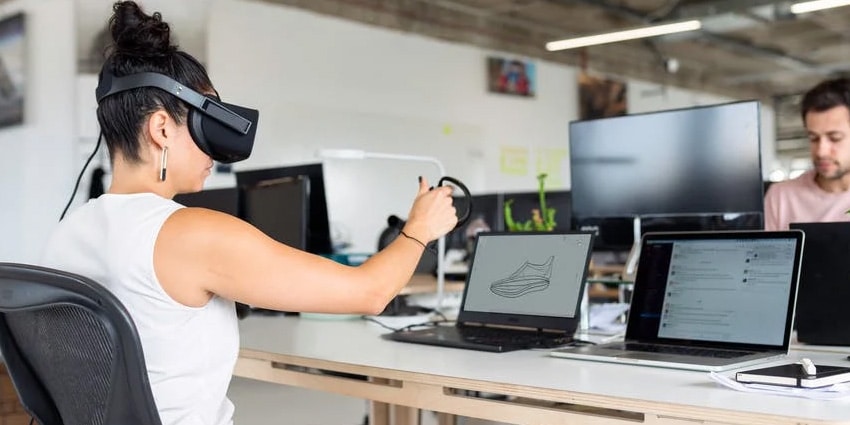
Also read: VR Odyssey: Crafting Immersive Realms and Future Vistas
1. Understand VR Basics:
In order to commence the creation of captivating virtual reality experiences, it is crucial to dive into the fundamental aspects of VR technology. Acquire a comprehensive grasp of crucial elements such as VR headgear, controllers, detectors, and monitoring mechanisms. Apart from the equipment, delve into the various domains of VR encounters, covering 360-degree clips, interactive settings, and immersive challenges. Acknowledge the distinct traits and obstacles linked to each form of encounter, setting the foundation for well-formed design choices. This understanding not only aids in effective communication with development tools and programs but also guarantees a holistic approach to formulating interesting and immersive VR material. Embracing the multifaceted essence of VR, from its technical complexities to its varied experiential opportunities, sets the groundwork for a triumphant expedition into the vibrant domain of virtual reality construction.
2. Choose a VR Platform:
Opting for a suitable virtual reality platform stands as a critical decision within the developmental procedure. Ponder elements such as the target demographic, technical specifications, and development preferences. Choices of note comprise the Oculus Rift, celebrated for its superior immersive encounters; the HTC Vive, boasting robust tracking and room-scale capabilities; PlayStation VR, enticing a console gaming crowd with its integration into the PlayStation ecosystem; and independent gadgets like Oculus Quest, granting uninhibited mobility. Evaluate the distinct features and constraints of each platform, factoring in the extent and goals of your project. Compatibility with developmental instruments, community assistance, and market penetration are also pivotal considerations. Ultimately, the preferred platform shapes the developmental atmosphere, affecting design decisions and optimization strategies. Guaranteeing harmony between your artistic vision and the designated VR platform establishes the groundwork for a thriving and customized virtual reality journey.
3. Set Up Development Environment:
Upon ascertaining your favored virtual reality (VR) platform, the subsequent critical step involves installing the necessary software development kits (SDKs) and tools. When it comes to widely utilized platforms such as Oculus Rift, HTC Vive, PlayStation VR, or autonomous devices like Oculus Quest, refer to the respective developer documentation and acquire the suitable SDKs. Ventured VR development environments consist of Unity3D and Unreal Engine, both bestowing comprehensive backing for VR content generation. Procure and establish the VR-specific plugins and extensions conferred by these engines, ensuring flawless amalgamation with the selected platform’s features and functionalities. Acquaint yourself with the SDK’s documentation, exemplar projects, and developer forums to capitalize on community insights and rectify probable obstacles. Formulating a sturdy software groundwork aligns your development milieu with the capacities of the VR platform, empowering resourceful coding, testing, and optimization across the design progression.
4. Hardware Requirements:
Delving into the realm of virtual reality development requires a thorough inventory of the essential hardware components needed to effectively create and test your immersive experiences. Kick-off with a robust computer that satisfies the specifications endorsed by your chosen VR platform and development environment, such as Unity3D or Unreal Engine. A top-tier graphics card, ample RAM, and a competent processor are fundamental for the smooth creation and testing of VR content.
Invest in a VR headset that is compatible with your selected platform, whether it’s the Oculus Rift, HTC Vive, PlayStation VR, or autonomous devices like the Oculus Quest. Confirm that your headset is equipped with the necessary tracking and input features essential for your project.
Furthermore, procure controllers that are in sync with the chosen VR platform. These controllers play a pivotal role in integrating interactive elements and fostering user engagement in your VR experiences.
By ensuring that your hardware meets or surpasses the recommended specifications, you establish an ideal development environment that fosters seamless testing and enhancement of your VR content throughout the development journey.
5. Design Considerations:
Embarking on the realm of virtual reality creation demands profound contemplation of distinctive elements shaping user engagement and the overall journey. It is paramount to elevate user comfort as a central focus, taking into account variables such as ergonomic factors, navigational ease, and the attenuation of potential discomfort linked to prolonged VR immersion. Harmony must be achieved between the dimensions of virtual landscapes and the anticipations rooted in reality, cultivating a palpable essence of presence and submersion.
To enhance the realm of VR for ultimate comfort, meticulous attention must be devoted to the mitigation of motion sickness. Implementation of design tactics like seamless propulsion alternatives, gradual speed enhancements, and thoughtful manipulation of visual cues stands as pivotal in the alleviation of disorientation. Fusion of comfort configurations, encompassing malleable field of view or teleportation mechanisms, grants users the liberty to tailor their journey by personal inclinations.
Weighing up realism against user welfare necessitates a meticulous approach to the crafting of interactive components, steering away from exaggerated or abrupt gestures. Consistent evaluation and trial feedback emerge as essential elements in honing these aspects, fostering an atmosphere that exudes not just a sense of submersion but also delights and coziness for an assorted spectrum of users. The orchestration of this equilibrium bears immense weight in the prosperity and embrace of your VR voyage.
6. Develop 3D Assets:
The act of creating or bringing in 3D forms, patterns, and motions stands as a crucial juncture in sculpting a gripping virtual reality encounter. Utilizing programs like Blender, Maya, or 3ds Max, fashion creations that align with your VR setting and forge topnotch patterns that find a harmony between detail and execution. If motions come into play, employ tools such as Autodesk Maya or Blender to guarantee a sense of reality. Essential to this process is streamlining resources for optimal performance in accordance with the requirements of your intended VR platform. Lowering polygon amounts, compressing textures proficiently, and utilizing level-of-detail (LOD) models for adaptive complexity modifications all play a key role. Introducing texture atlases, mesh streamlining, and strategic resource grouping serves to boost rendering efficiency.
Consistently evaluate your VR journey on the desired platform, ensuring a stable frame rate to stave off discomfort. Handling memory and adaptable loading contribute to a more seamless experience, catering to both visual excellence and top-notch performance for a seamless and pleasurable VR atmosphere.
7. Implement Interactivity:
Explore the potential of the selected virtual reality platform’s software development kit (SDK) to intricately incorporate interactions and controls within your virtual world. Whether it be Oculus Rift, HTC Vive, PlayStation VR, or standalone devices like Oculus Quest, utilize the SDK to merge features like hand tracking, gestures, and other input methods that enhance the overall immersive journey. Leverage the SDK’s capabilities to smoothly connect physical movements to virtual interactions, providing users with a more instinctive and captivating way of exploring and engaging with the VR universe.
Experiment with gesture identification to amplify realism, enabling users to manipulate virtual objects or activate functions through organic hand movements. Continuously evaluate these interactive components on the specific VR hardware to refine responsiveness and ensure a seamless and enjoyable user experience. By embracing the full range of input options presented by the SDK, you enhance the level of immersion and user interaction within your virtual reality endeavor.
8. Test and Iterate:
The process of iterative examination and enhancement forms the core of thriving virtual reality adventure cultivation. Regularly test your VR project on designated hardware to identify and address potential performance issues, glitches, and user interaction challenges. This cyclical evaluation method enables you to optimize the efficiency of your VR endeavor, guaranteeing its seamless operation on the selected platform and minimizing the chances of unease or motion-induced sickness for users.
Apart from technical scrutiny, actively collect input from users who have encountered your VR material. User reactions offer valuable insights into ease of use, comfort, and general contentment. Ponder setting up playtesting gatherings, surveys, or obtaining feedback via online portals to capture a varied array of standpoints. Utilize this input to make successive enhancements, address any noted problems, refine user engagements, and bolster the overall caliber of the VR adventure.
Through embracing a perpetual examination and feedback cycle, you not only secure the technical resilience of your VR venture but also craft an adventure that resonates with and enchants your intended audience. This user-focused strategy contributes to the continual triumph and advancement of your virtual reality creation.
9. Optimize Performance:
Optimize your VR adventure for peak results, focusing on essential methods to enhance user satisfaction and overall engagement. Simplify the rendering procedures by removing unnecessary visual components and enhancing the rendering process. Incorporate texture enhancement methods, such as compression and mipmapping, and merge textures with atlases to decrease memory usage and enhance rendering speed. Utilize level-of-detail (LOD) strategies to dynamically alter 3D model intricacy depending on user closeness, optimizing resource allocation without sacrificing visual excellence. Most importantly, uphold a steady frame rate, surpassing 90 fps, to reduce motion sickness and guarantee a seamless VR experience. Consistently evaluate your VR application on the designated platform, pinpointing performance obstacles and implementing gradual enhancements. This user-friendly technique not only enhances technical effectiveness but also nurtures a pleasant and immersive VR journey for a diverse audience.
10. Implement Sound Design:
Enhance the captivating essence of your virtual reality journey by strategically integrating spatial audio and 3D sound technologies. Spatial audio introduces depth and directionality into the acoustic realm, crafting a more believable and interactive encounter for individuals. Deliberate about the positioning of audio origins within the virtual realm, harmonizing them with corresponding visual factors to achieve synchronization and fortify a sense of presence. Implement binaural and positional audio for authentic human-like reception, enhancing the overall VR experience’s auditory authenticity. Routinely experiment and refine audio components to guarantee seamless fusion with visual aspects, cultivating a unified and multimodal environment. Prioritizing spatial audio elevates your VR experience, immersing users in an enthralling virtual realm that stimulates both vision and hearing.
11. Address Motion Sickness:
Alleviating motion sickness is crucial when aiming to craft an immersive virtual reality journey. Enhance comfort with strategies like teleportation, vignettes, and adjustable field of vision, catering to a diverse range of users. Teleportation permits seamless navigation without the need for traditional locomotion, thereby lowering the likelihood of discomfort. Vignettes, also known as peripheral blinders, restrict peripheral movement, thereby alleviating potential motion sickness. An adjustable field of vision empowers users to customize their VR adventure, catering to personal comfort preferences.
Nevertheless, the efficacy of these strategies may vary among individuals. As a result, thorough testing is imperative. Collect user input through playtesting, surveys, or online discussions to understand the impact of comfort enhancements on users. Continuously refine and revise based on user feedback, striking a balance between comfort and the desired level of engagement. This iterative approach ensures inclusivity, addressing motion sickness and enhancing user contentment in VR.
12. Publish and Distribute:
Adhering to platform requirements ensures successful showcasing of your VR product to a broad audience during the publication process. Strict adherence to submission guidelines is crucial for approval on platforms like Oculus Rift, HTC Vive, PlayStation VR, or Oculus Quest. Boost visibility by submitting your VR project to dedicated platforms like Oculus Store, SteamVR, and PlayStation Store for enhanced accessibility. To increase the reach of your project, consider using additional distribution channels such as your website or third-party platforms. Participate in VR groups and forums to promote your product and get vital input for future improvements. Regularly update your VR experience in response to user feedback and new platform requirements. Navigate publication standards and leverage diverse channels for VR success, ensuring continual participation in the ever-evolving VR landscape.
13. Stay Updated:
Stay updated on VR with the latest technological breakthroughs, SDK upgrades, and design best practices for cutting-edge virtual reality experiences. Regularly check for updates from VR platform providers and industry magazines to keep your projects equipped with the latest features. Actively interact with the VR community via forums, social media, and industry events to network and collaborate. Attend conferences and meetings to network, share expertise, and learn about emerging trends. Contribute to open-source projects to expand your knowledge and positively affect the VR environment. Remaining informed and engaged ensures technologically advanced projects and empowers you to respond to industry shifts, contributing to VR’s growth.
The final words
Iterative VR creation demands ongoing testing and user feedback, crucial for crafting effective and enjoyable virtual reality experiences.



